Prague is a charming city, because it escaped the ravages of war, much of its old city is well preserved and represents the changing architectural styles over the centuries, from Gothic, Renaissance and Baroque. I know that many of our framily that are following this blog have been here, and some even consider this their favorite city (shout out to EFL), no doubt because of its historic charm. For them, I hope that you will not be bored, maybe we saw something different or new. For those who have not been here, you should try to visit, though crowded with tourists, it embodies, wonderful culture of food, art, music and history.

Pigs Knees were on every menu, so we had to try it. Yummy. 
Desserts were great too. 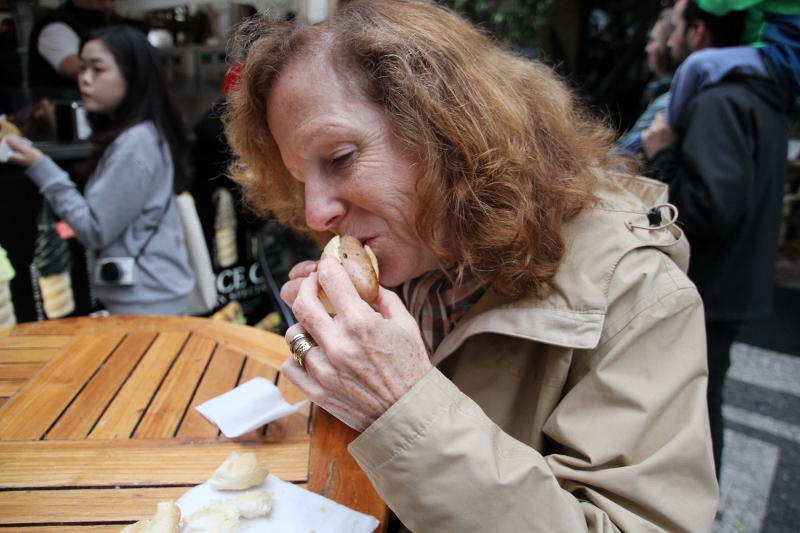
The sausage was great. 
As was the ham. 
Did not have these, but was interesting 
We traveled from Vienna to Prague by train. The trains here in Europe are a wonderful way to see the county and so much better than trains in the US. After settling into our hotel, we struck out on our own to walk around the old city starting at the Old Town Square and ending up at the Charles Bridge.

You do not wear heels on the cobbled streets 

Town Hall 

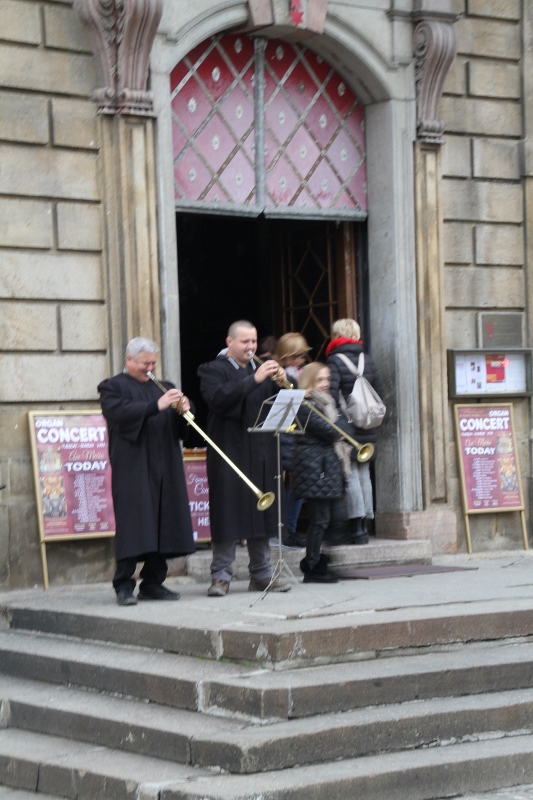



Church of our Lady before Tyn 
For Elyse 
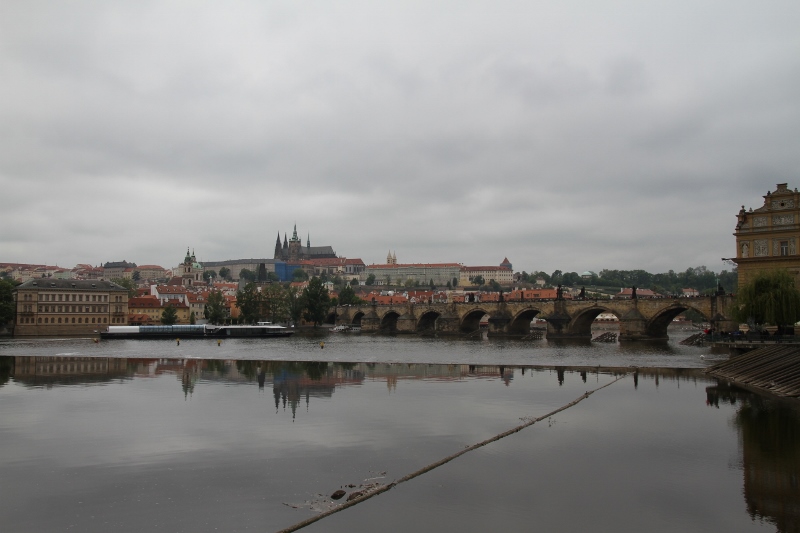
The Charles Bridge 
Jan Hus 


Mark the spot of the martyrs of the Hapsburg executions after the Battle of White Mountain. 
In the Old Town Square 



In the morning, Friday, we started in the old Jewish quarter. This is actually more “modern” than much of the rest of the Old city. In the late 19th century many wealthy Jews had moved out of the Ghetto leaving behind the poor or the Orthodox. After years of neglect, much of the area had become a slum. To revitalize the area, most of the buildings were torn down and rebuilt in a late 19th century Art Nuevo style. At that time, some of the old Synagogues were torn down as well. Some were rebuilt and some older ones, remain, though not all are active. One of the oldest is the Pinkas synagogue. Dating from the 1500’s the building is no longer an active synagogue. Instead it serves as a museum and a memorial to the Czech Jewish victims of Shoah. The walls of the synagogue are covered with the names of about 78,000 who perished. The names are arranged by communities where the victims came from and complemented with the dates of their birth and death. Everyday a recording recites the names. Upstairs is an exhibition of pictures drawn by children in the concentration camp in Theresienstadt. The teacher there, Friedl Dicker-Brandeis, encouraged the children to express themselves in drawing, to grapple with their grim experiences.

The Pinkus Synagouge 


The Children’s drawings
We moved on to the Old New Synagogue, a 13th century gothic building that is Europe’s oldest active synagogue.

The Old New Synagogue 


Two safes, one for the temple, the other for the Town.
The Old Jewish Cemetery abuts the Pinkus synagogue. This is a dense forest of gravestones dating back to the 15th Century to the middle of the 18th Century. There are over 20,000 graves in this limited space with layers of graves which accounts for the level of earth well above the surrounding streets. This is the burial place of rabbi Jehuda Liva ben Becalel, a Jewish philosopher and mystic, purportedly he created the Golem of Prague, an animate mythological being fashioned from clay.



Rabbi Liva’s grave.
Moving on, we reached the Town Square in time to see the Astronomical Clock strike the hour. First installed in 1410, this is the third-oldest astronomical clock in the world and the oldest one still operating. The clock tells the time, the phases of the moon and the month. At the top of the hour, the doors at the top open and the 12 apostles move around to the sound of the bells. At the same time figures representing vanity, greed, and lust shake their heads no, while the figure of Death rings a bell and nods his head yes. At the end of the chiming of the bells, the cock crows and all is silent.


Vanity and Greed 
Death and Lust
We continued on our walk to Wenceslaus square, which is really a long boulevard. This is where over 250,000 people gathered to protest communist rule and where the “Velvet Revolution” was celebrated. Our guide told us the stories from a personal prospective as he was there that fateful day when they shook their keys as the bells of freedom.


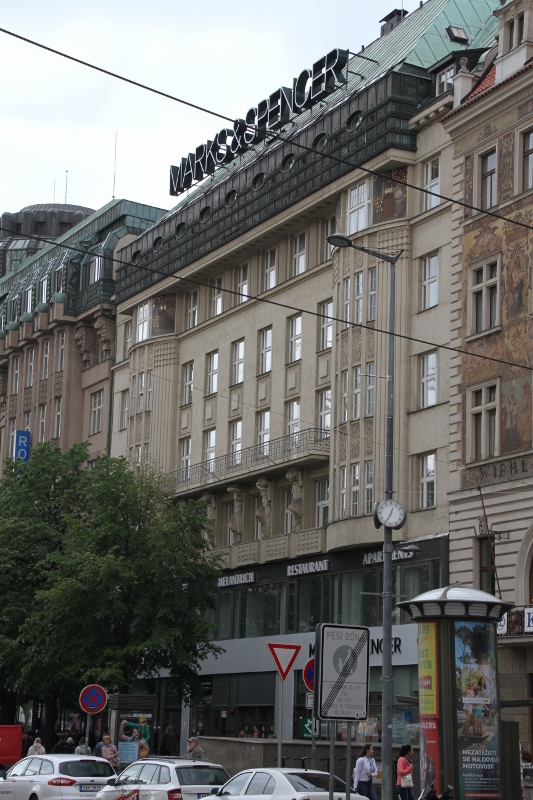
The balcony where the leaders announced the end of Communist rule by shaking their keys as the “bells of freedom”
Our next stop took us to the 1700’s, for a private behind the scenes of the Estates Theater. This is where Mozart conducted the world premiere of his opera Don Giovanni in 1787. It is the sole extent theater where Mozart conducted. Constructed in the early 1700’s it is still an active theater.
Our final area to visit in Prague was the area around Prague castle on the other side of the Vltava river. We first visited the Loreta, a pilgrimage site that contains a complex of buildings including the Santa Casa, which is a replica of the House of Mary, surrounded by a cloister. The cloister also houses a large collection of liturgical tools from the 16th through the 18th centuries. The most famous of which is the “Prague Sun”, a monstrance encrusted with 6,222 diamonds.

Santa Casa 
The Cloister 
We next had a private tour of the Baroque library halls of the Strahov Monastery. Dating from the 17th century, there are over 200,000 volumes on theology, philosophy, medicine and astronomy. There is also a collection of volumes donated by Napoleon’s second wife that lists the collection in the Louver museum. There are only three of these volumes in existence.


A revolving reading desk 

Globes from the 1700’s 

To reach the books on the top shelf. 
Catalog of the Louvre 
The chair folds into the table.
Finally, we visited St. Vitus Cathedral and the surrounding palace. Here we saw the tombs of St. John and of Good King Wenceslaus.
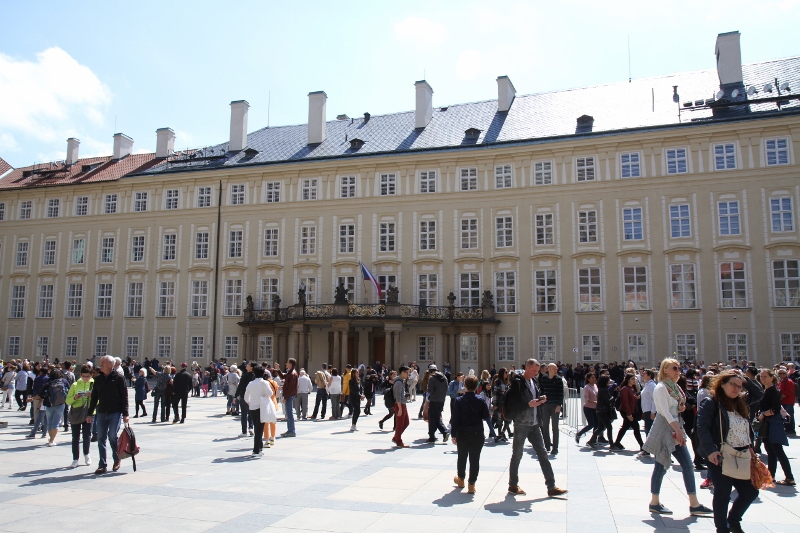

The palace hall 
the famous Defenestration that started the 30 years war was from this window. 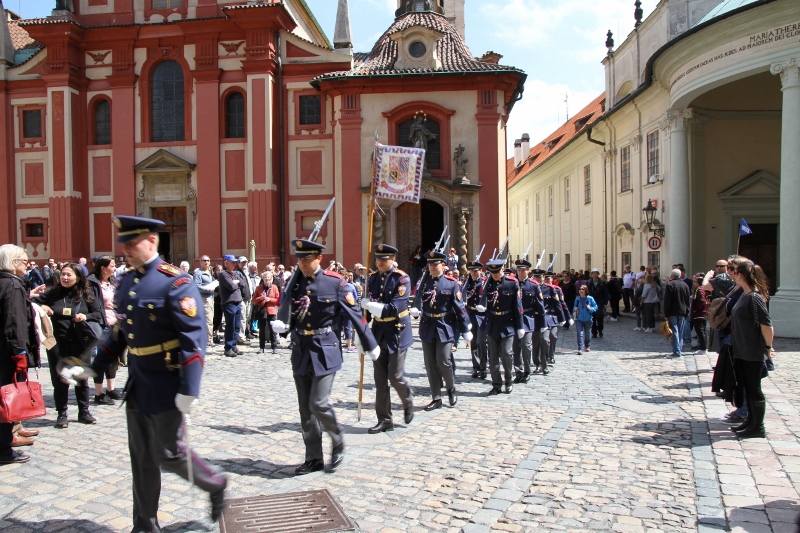
A changing of the guard 
The front of the Cathedral 
The rear 
a gargoyle 

St. Vitus 
Tomb of St. John 
Tomb of King Wenceslaus
We had our last dinner in Prague overlooking the Charles Bridge. Built by Charles IV, there are many statues on either side of the bridge. These are all replicas of the originals, but still impressive. Of interest is the one of St. John. It is said that if you touch the bronze plaque beneath his statue and make a wish it will come true.

Charles IV 

The Charles Bridge 

Dinner by the river 
Making a wish 
Making a wish 
Marks the spot where they threw John in the river. 



